IntroductionI initially planned to forego the increased spatiality and realism of DSA (SACD) recordings in my office rig, but you know how it goes in the rabbit hole. My previous office system DAC, a Cary Audio DAC-100 ($2,495), does not accept DSD input and it does not have an AES input. Although it offers optical and coaxial inputs, the DAC-100 is optimized for USB input. I began looking for a DAC that would work well with my Bryston BDP-2 digital player and that offered coax, AES, and USB inputs, and that accepts DSD input. The Bryston BDA-3 ($3,495) met all those criteria.
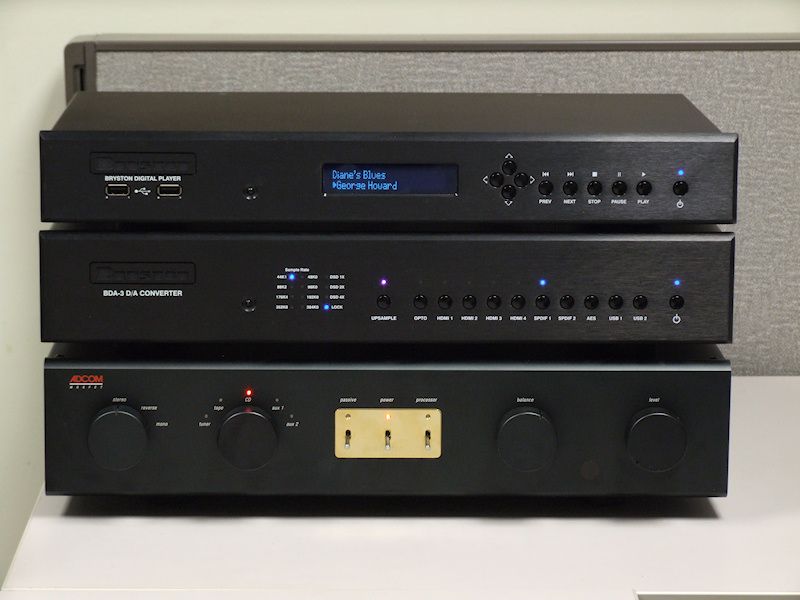 Figure 1. Top to bottom: Bryston BDP-2 digital player, Bryston BDA-3 DAC, Adcom GFP-750 preamplifier.Preliminaries
Figure 1. Top to bottom: Bryston BDP-2 digital player, Bryston BDA-3 DAC, Adcom GFP-750 preamplifier.PreliminariesMy stereo listening evaluation methodology is based on mapping the locations of sound images laterally and aerially, making notes of the character of the individual sounds in the sound stage and making notes of the tactile sensations produced.
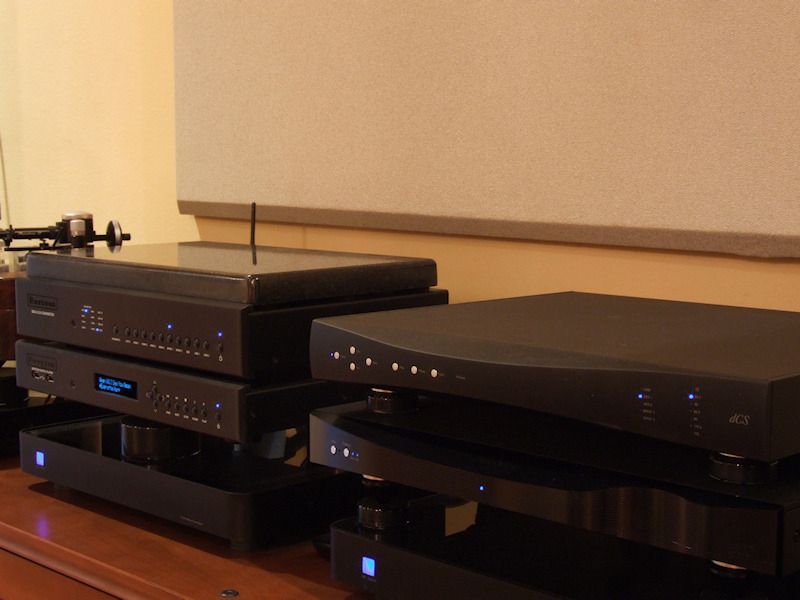 Figure 2. The BDA-3 goes up against the dCS Debussy DAC ($11,500), which is over three times the BDA-3's price.
Figure 2. The BDA-3 goes up against the dCS Debussy DAC ($11,500), which is over three times the BDA-3's price.The BDA-3 sounded great out of the box, and even better after 24 hours of continuous play. The BDA-3 was connected to my Pass Labs XP-30 preamp via AudioQuest Sky (Gen. 2) XLR interconnects. It was connected to the PS Audio P10 AC regenerator with a PS Audio AC 12 power cord. The Debussy DAC also used AudioQuest Sky (Gen. 2) XLR interconnects and a PS Audio AC 12 power cord.
The BDP-2 digital player has one each of coaxial, AES, and USB outputs. The BDP-2's USB output cannot be used because it is connected via USB connection to a dCS Puccini word clock, which will not allow another USB output connection. Therefore, turns were taken comparing the BDA-3 via coaxial connection vs. the Debussy via AES connection and then the BDA-3 via AES connection vs. the Debussy via coaxial connection. Digital interconnect cables were the latest version Prophecy Cryo-Silver coaxial and AES cables from Revelation Audio Labs.
Listening tests were done by switching between the preamp's Debussy and BDA-3 inputs and then by carefully mapping the location of sound images in the sound stages generated by each DAC. The character of each sound image along with tactile sensations, was also noted. The BDA-3's sound stage was the same width and height as the Debussy's, but half as deep (dropping from 10' to 5').
The BDA-3 did not generate the high level of
palpable three dimensional holography, tactile sensation, overall clarity and detail, and ambient sounds as the Debussy.
But I digress, the BDA-3 was not designed to compete with five figure DACs and was not designed to "fit in" with six figure stereo systems. After a brief visit to the "tweak shop", and two more listening sessions, the BDA-3 was taken to its new home in my office rig.
TweaksSome of my digital gear have benefitted from audio grade power line fuses and Dynamat Xtreme vibration damping applied to the case.
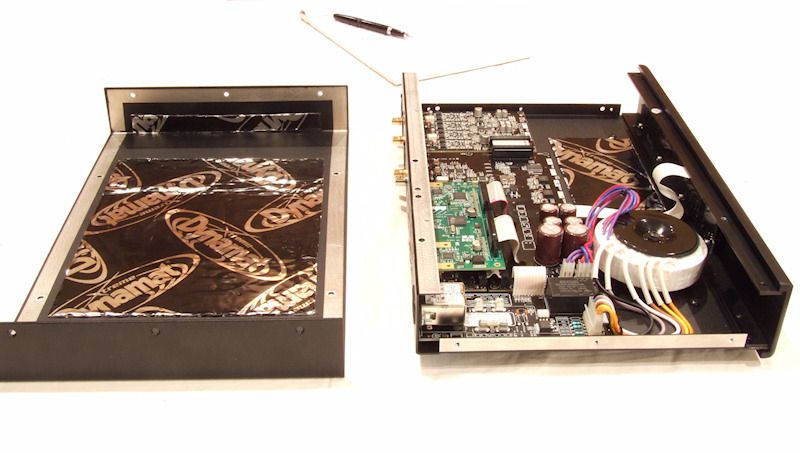 Figure 3. Unlike many "chip" DACs, the BDA-3's chassis is 90% full of "stuff".
Figure 3. Unlike many "chip" DACs, the BDA-3's chassis is 90% full of "stuff".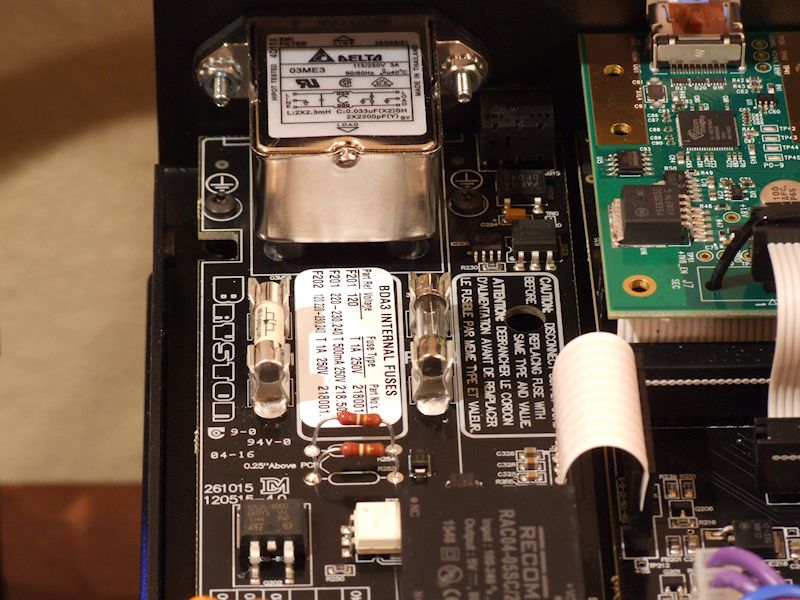 Figure 4. The power line fuse, at left, was replaced with an audio grade Hifi Tuning Silver Star fuse. Current enters the fuse receptacle at the clips nearest the rear panel, therefore the fuse arrow was oriented pointing to the front of the unit.
Figure 4. The power line fuse, at left, was replaced with an audio grade Hifi Tuning Silver Star fuse. Current enters the fuse receptacle at the clips nearest the rear panel, therefore the fuse arrow was oriented pointing to the front of the unit.I did not perceive a sonic improvement after the application of Dynamat. It did stop the case from ringing after being "thumped". There was a small improvement in clarity and detail after the fuse upgrade.
Worklife RewardsCritical listening was done after 144 hours of continuous playback. The BDA-2 offers the option of upsampling 44.1 kHz and 88.2 kHz files to 176.4 kHz and upsampling 48 kHz and 96 kHz files to 192 kHz. Upsampling works on the coaxial, optical, and AES inputs. Music files were 44.1 kHz FLAC files ripped from CD. Upsampled mode sounded better than native mode, therefore comparative listening between coaxial, AES, and USB was done with upsampling engaged.
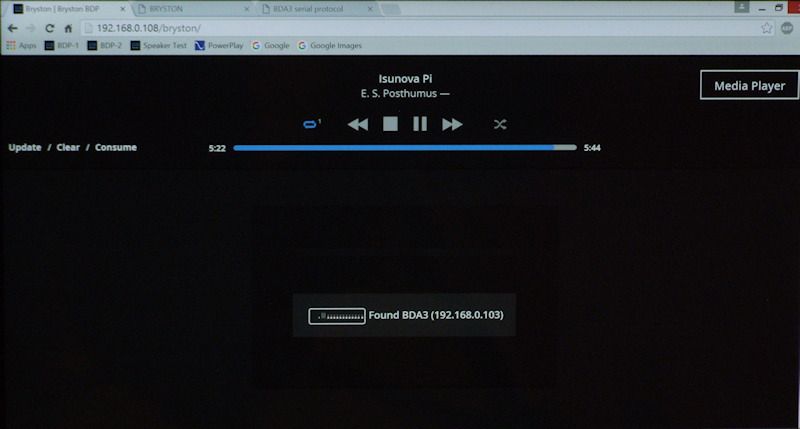 Figure 5. No setup issues whatsoever. I plugged the BDP-2's digital outputs into the BDA-3 and the BDA-3 was instantly recognized by the BDP-2.
Figure 5. No setup issues whatsoever. I plugged the BDP-2's digital outputs into the BDA-3 and the BDA-3 was instantly recognized by the BDP-2.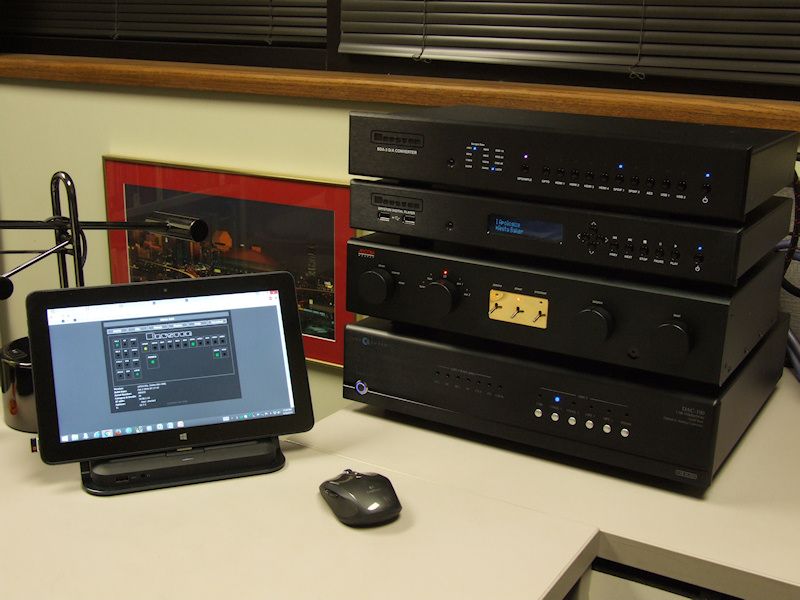 Figure 6. Top to bottom: BDA-3 DAC, BDP-2 digital player, GFP-750 preamp, DAC-100. This too, was an unfair comparison, the BDA-3 is in a class above the DAC-100.
Figure 6. Top to bottom: BDA-3 DAC, BDP-2 digital player, GFP-750 preamp, DAC-100. This too, was an unfair comparison, the BDA-3 is in a class above the DAC-100.The BDA-3 and DAC-100 were compared using the same coax/AES alternating scheme that was used in the BDA-3/Debussy comparisons. Since the GFP-750 preamp only has one set of XLR inputs, the BDA-3 and the DAC-100 were connected to the '750's Aux1 and Aux2 inputs via Signal Cable Analog 2 single-ended interconnects. Digital cables were Signal Cable coaxial and AES.
The BDA-3 generated a deeper (by 3' rearward), more detailed sound stage with more image weight and image density. Whereas image density with the DAC-100 was highest in the center and trailed off toward the sides, the BDA-3's image density was consistent across the width of the stage. Images at the far left and far right of the stage moved forward 2 feet.
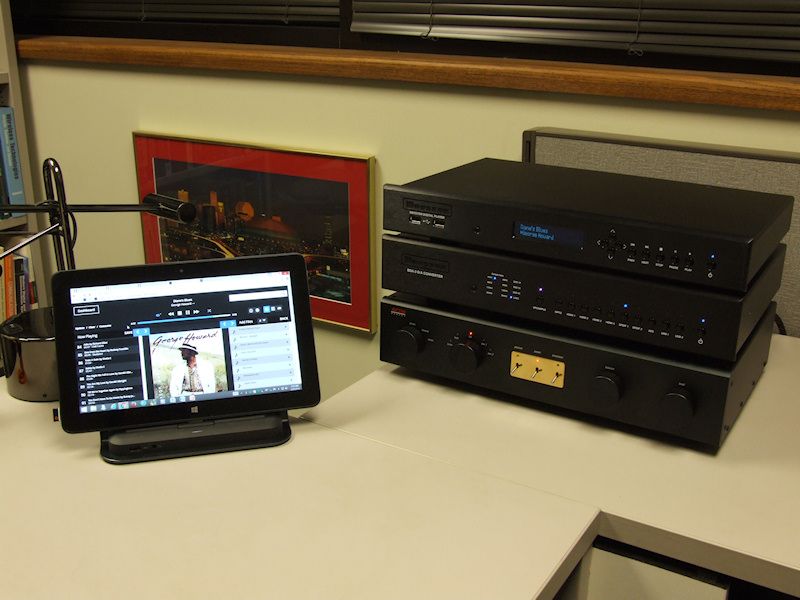 Figure 7. All I was really after was to be able to play ALL of my digital file formats, but I ended up with Such Good Sound that I sometimes find myself working later. The music sometimes causes me to lose track of time...sort of like being in a "bubble" where time stands still.
Figure 7. All I was really after was to be able to play ALL of my digital file formats, but I ended up with Such Good Sound that I sometimes find myself working later. The music sometimes causes me to lose track of time...sort of like being in a "bubble" where time stands still.The BDA-3 can be controlled three ways:
1. By computer via the BDA-3's web-based interface ( I use a docked Dell Venue Pro 11 7140 tablet).
2. With a Bryston BR-2 multiproduct remote control ($375).
3. With a universal remote programmed with (free) codes available from Bryston.
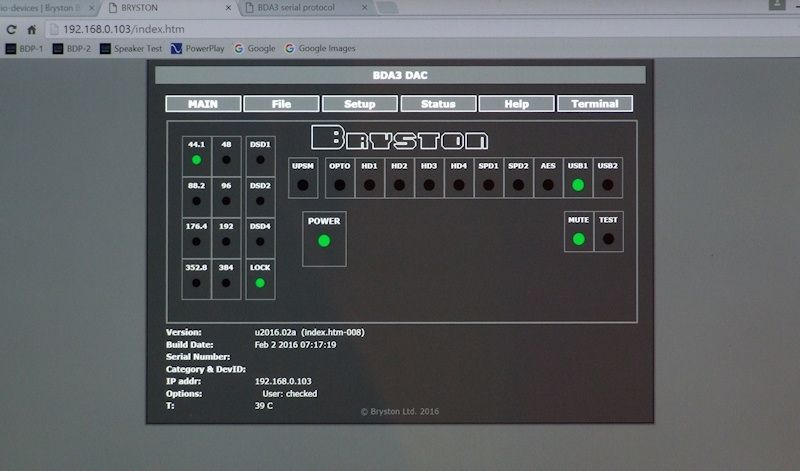 Figure 8. BDA-3 web-based control interface.Cable Trials
Figure 8. BDA-3 web-based control interface.Cable TrialsOnce I had gained an understanding of the stereophonic performance differences between the DAC-100 and the BDA-3, in this system, in this room, I moved on to more extensive cable trials.
It is commonly thought that a digital signal is just "ones and zeros", therefore there is no way that there could be audible differences in digital cables that meet transmission specifications. Actually, there is no such thing as a "digital" signal that only varies between two discrete voltage values. If you look at a "digital" signal on an oscilloscope, you find that it ramps up to a nominal maximum high voltage level, overshoots that by a bit, then fluctuates closely around the nominal maximum level, then ramps down to a nominal minimum low voltage level, undershoots that by a bit, then fluctuates closely around the nominal minimum level, then the process repeats. In this regard, a "digital" signal is continuously varying with time
JUST LIKE ANY OTHER ANALOG SIGNAL. Therefore, a "digital" signal is subject to SOME of the same noise effects as any other
ANALOG signal.
Again, music files were 44.1 kHz FLAC ripped from CD. AES and coaxial listening was done with upsampling (to 176.4 kHz) engaged.
Analog Cable Trials:With the DAC-100, in this office system, I did not perceive an audible difference between the Signal Cable Silver Resolution Reference XLR interconnects ($209 per 3' pair) and the PS Audio xStream Transcendent XLR interconnects ($500 per meter). I heard more musical detail through the Transcendents with the higher resolution BDA-3.
Digital Cable TrialsThe purpose of the digital cable trials was to determine which of the BDP-2's digital outputs sounded best with the BDA-3 and which digital cable sounded best on a specific type of output (coaxial, AES, USB). Trial results are listed in order of decreasing sound quality. Depth, clarity, and detail were diminished going from 1 to 2 to 3.
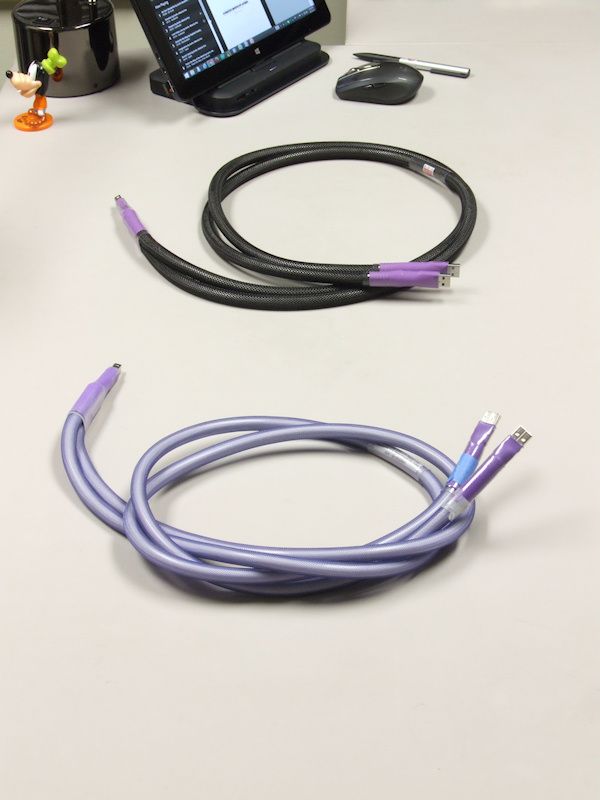 Figure 9. At top: Current version RAL Cryo-Silver USB 2.0 cable with CCIC jacket and upgraded Amphenol connectors. Bottom is prior version USB 2.0 cable.
Figure 9. At top: Current version RAL Cryo-Silver USB 2.0 cable with CCIC jacket and upgraded Amphenol connectors. Bottom is prior version USB 2.0 cable. The "dual A head" USB cable configuration allows the power conductors to disconnected after the USB connection is established. Depending on the resolution of the stereo system, removing the power leg can result in a lower noise floor and greater clarity and detail.
Digital Cable Trial 1:1. USB - Pangea USB-PC ($110)
2. AES - Signal Cable ($45)
3. Coaxial - Signal Cable ($45)
Digital Cable Trial 2:1. Coaxial - Revelation Audio Labs Prophecy Cryo-Silver BNC-BNC ($449)
2. USB - Pangea USP-PC ($110)
3. AES - Signal Cable ($45)
Digital Cable Trial 3:1. USB - Revelation Audio Labs Prophecy Cryo-Silver with power leg unplugged ($549)
2. Coaxial - Revelation Audio Labs Prophecy Cryo-Silver BNC-BNC ($449)
3. AES - Signal Cable ($45)
Digital Cable Trial 4:1. Coaxial - Revelation Audio Labs Prophecy Cryo-Silver BNC-RCA, CCIC* ($549)
2. USB - Revelation Audio Labs Prophecy Cryo-Silver with power leg unplugged ($549)
3. AES - Signal Cable ($45)
Digital Cable Trial 5:1. Coaxial - Revelation Audio Labs Prophecy Cryo-Silver BNC-BNC, CCIC* ($549)
2. USB - Revelation Audio Labs Prophecy Cryo-Silver with power leg unplugged ($549)
3. AES - Signal Cable ($45)
Digital Cable Trial 6:1. AES - Revelation Audio Labs Prophecy Cryo-Silver, CCIC* ($549)
2. Coaxial - Revelation Audio Labs Prophecy Cryo-Silver BNC-BNC, CCIC* ($549)
3. USB - Revelation Audio Labs Prophecy Cryo-Silver with power leg unplugged ($549)
Digital Cable Trial 7: (Tie between AES and USB cables.) 1. AES - Revelation Audio Labs Prophecy Cryo-Silver, CCIC* ($549)
1. USB - Revelation Audio Labs Prophecy Cryo-Silver with power leg plugged in, CCIC* ($649)
2. Coaxial - Revelation Audio Labs Prophecy Cryo-Silver BNC-BNC, CCIC* ($549)
3. USB - Revelation Audio Labs Prophecy Cryo-Silver with power leg plugged in ($549)
Digital Cable Trial 8:1. USB - Revelation Audio Labs Prophecy Cryo-Silver with power leg plugged unplugged, CCIC* ($649)
2. AES - Revelation Audio Labs Prophecy Cryo-Silver, CCIC* ($549)
*CCIC - Conductive Carbon Infused Composite
 Figure 10. Top to bottom: RAL AES CCIC cable, RAL USB Dual A Head CCIC cable, RAL coaxial BNC-BNC CCIC cable.
Figure 10. Top to bottom: RAL AES CCIC cable, RAL USB Dual A Head CCIC cable, RAL coaxial BNC-BNC CCIC cable.The BDA-3 only accepts DSD via the USB input. I expected the BDP-2's AES output would sound best and I expected to have to use two digital cables: USB for DSD music and AES for everything else. Fortunately, it turned out that the USB output (with cable power leg removed) was the best sounding. Every now and then I catch a break in the rabbit hole.
The moral of this story is that you should always be willing to try new things to see what works...and then let us know.
Further Study Figure 11. A Bryston 4B3 power amplifier ($5,695, 300 wpc 8 ohms/500 wpc 4 ohms) is coming to replace the Adcom GFA-565SE ($1,499). The Adcom was a "stop gap" until I decided what I wanted for power amplification.
Figure 11. A Bryston 4B3 power amplifier ($5,695, 300 wpc 8 ohms/500 wpc 4 ohms) is coming to replace the Adcom GFA-565SE ($1,499). The Adcom was a "stop gap" until I decided what I wanted for power amplification.I am considering sending the GFP-750 to Musical Concepts to have the caps, resistors, and power supply diodes replaced, along with changing the LEDs to blue. After that, I will address power cables and that
***should*** complete this upgrade adventure.
Associated EquipmentOffice System:Bryston BDA-3 digital to analog converter
Bryston BDP-2 digital player with 500GB internal drive
Adcom GFP-750 preamplifier
Adcom GFA-565SE power amplifier (250 wpc 8 ohms/350 wpc 4 ohms)
PS Audio xStream Transcendent XLR interconnects
Revelation Audio Labs Prophecy Cryo-Silver CCIC USB cable
Signal Cable Digital Reference power cords for DAC and digital player
Signal Cable MagicPower cords for power amp and preamp.
PS Audio P10 AC Regenerator
PS Audio Statement SC power cord for P10 AC Regenerator
Polk Audio SDA CRS+ (1989 version) loudspeakers (heavily modified)
Douglas Connection CDF92 speaker cable (9 AWG)
HiFi Tuning Classic Gold and Silver Star fuses for all electronics.
Dell Venue Pro 11 7140 tablet computer for digital player and DAC control
Two Channel System:Teres Audio Model 255 turntable
Graham Phantom II tonearm
Ortofon MC Windfeld phono cartridge
Sonic Purity Concepts and Design "The Clamp" record clamp
Bryston BDP-2 digital player
dCS Puccini master clock
dCS Debussy DAC
PS Audio PowerBase isolation platforms for turntable, BDP-2, Debussy DAC and Puccini U-Clock
Black Diamond Racing isolation Pits and Mk IV Cones
Pass Labs XP-30 line level preamplifier
Pass Labs XP-25 phono preamplifier
Pass Labs X600.5 monoblock power amplifiers
Revelation Audio Labs Prophecy Cryo-Silver Split Configuration USB cable
Revelation Audio Labs Prophecy Cryo-Silver CCIC AES cable
Revelation Audio Labs Passage Cryo-Silver DB-25 power umbilicals for XP30 and XP-25 preamps
AudioQuest Sky XLR interconnects
AudioQuest Everest speaker cables
AudioQuest LeoPard tonearm cable
PS Audio PerfectWave AC-12 power cords
PS Audio PerfectWave P-10 AC Regenerator
Polk Audio SDA SRS 1.2TL loudspeakers (heavily modified)
HiFi Tuning Supreme audio grade fuses for preamps and source components
Salamander Synergy Triple 30 audio credenza
ReferencesdCS Debussy DAC Review:
http://forum.polkaudio.com/discussion/170612/dcs-debussy-dac-review/p1Pure Overkill Computer Audio Office System:
http://forum.polkaudio.com/discussion/168871/pure-overkill-computer-audio-office-systemThe Year Of DACs:
http://forum.polkaudio.com/discussion/168179/the-year-of-dacs/p1Bryston BDP-2 Digital Player Review:
http://forum.polkaudio.com/discussion/166413/bryston-bdp-2-digital-player-review